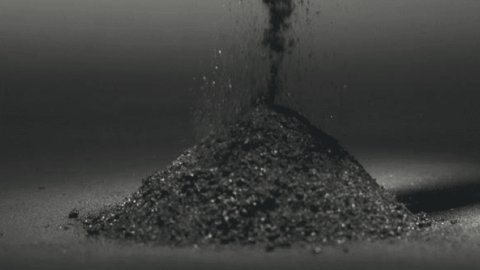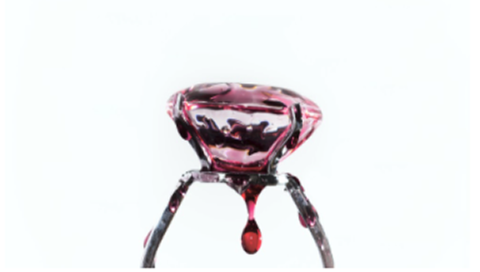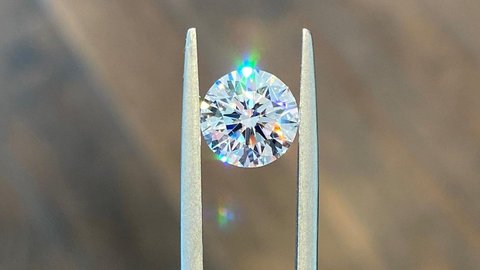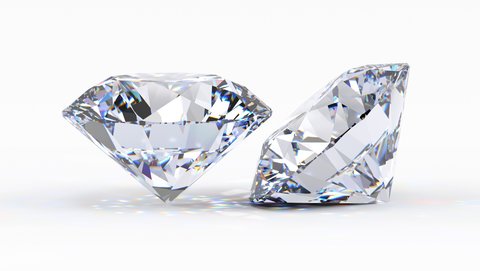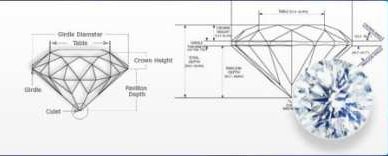Sustainability in Lab-Grown Diamonds
From the very start, lab-grown diamonds have been revolutionizing the jewelry industry by addressing key environmental and ethical concerns associated with traditional diamond mining. These eco-friendly alternatives offer a sustainable solution for consumers who value transparency, ethical sourcing, and environmental stewardship. How exactly do lab-grown diamonds compare to mined diamonds in terms of environmental impact, ethical considerations, and their role in creating a sustainable future?
| Indicator | Lab-Grown Diamonds | Mined Diamonds |
|---|---|---|
| Carbon Emissions | ~6 kg CO2 per carat (with renewable energy sources) | 57–160 kg CO2 per carat |
| Water Usage | ~0.0379 m3 per carat | 0.48–7.3 m3 per carat |
| Land Disruption | Minimal: no excavation or habitat destruction | High: 1,750 tons of earth displaced per carat |

Lab-grown diamonds are produced in controlled environments using methods like Chemical Vapor Deposition (CVD) and High Pressure High Temperature (HPHT). These processes require significantly less energy and water compared to mining operations, which involve large-scale excavation, deforestation, and habitat destruction. For example, mined diamonds require up to 127 gallons of water per carat, while lab-grown diamonds need only 10 gallons.
Moreover, lab-grown diamonds eliminate the need for harmful chemicals like cyanide and mercury, which are often used in mining and can pollute water supplies. Some producers even use renewable energy sources, such as solar power, to further reduce their carbon footprint.
Ethical Considerations: A Conflict-Free Choice
| Indicator | Lab-Grown Diamonds | Mined Diamonds |
| Labor Conditions | Controlled laboratory environments; no exposure to hazardous mining conditions | Risks of child labor, worker exploitation, and unsafe practices in some regions |
| Supply Chain Transparency | High: traceable origins with shorter supply chains | Mixed: legacy issues with conflict diamonds; certifications (e.g., Kimberley Process) aim to reduce risks |
One of the most significant advantages of lab-grown diamonds is their assurance of being conflict-free. Traditional diamond mining has a long history of unethical practices, including child labor, worker exploitation, and the funding of armed conflicts through "blood diamonds".
In contrast, lab-grown diamonds are created in regulated environments where labor conditions are monitored. Workers receive fair wages, and there is complete transparency in the supply chain. This makes lab-grown diamonds an ethical choice for consumers who want to avoid contributing to human rights abuses.
Economic Implications: Balancing Sustainability with Local Impact
| Indicator | Lab-Grown Diamonds | Mined Diamonds |
| Local Community Impact | Limited: production centralized in industrialized nations | Significant: supports livelihoods in mining regions (e.g., Botswana, Sierra Leone) |
| Market Growth | Rapid expansion: projected to grow at 9.4% CAGR (2024–2030) | Stable demand but declining market share due to sustainability concerns |
It is true that diamond mining contributes to the economies of mining-dependent regions, such as Botswana or Sierra Leone, by providing jobs and supporting local communities. However, as demand for sustainable alternatives grows, there is potential for new industries centered around renewable energy-powered diamond production. Rapid lab-grown diamond market increase is projected to create more and more new jobs in this specific sector.
Consumer Trends: The Shift Toward Sustainability
The rise of environmentally conscious consumers—particularly Millennials and Gen Z—has fueled the popularity of lab-grown diamonds. These generations prioritize transparency and sustainability when making purchasing decisions. Several brands have even developed carbon-negative diamonds by capturing CO₂ from the atmosphere during production. Lab-grown diamonds are also typically 40–60% more affordable than mined diamonds of comparable quality. This affordability allows buyers to choose larger or higher-quality stones without compromising on ethics or sustainability.
The Future of Sustainable Luxury
Lab-grown diamonds represent a paradigm shift in the diamond industry by addressing critical environmental and ethical issues associated with traditional mining. With their lower carbon footprint, reduced water usage, and conflict-free origins, they offer a compelling alternative for eco-conscious consumers. As technology advances and renewable energy becomes more widely adopted in production processes, lab-grown diamonds are poised to become the gold standard for sustainable luxury.
By choosing lab-grown diamonds, you’re not just purchasing a beautiful gemstone—you’re making a statement about your values and commitment to a sustainable future.




